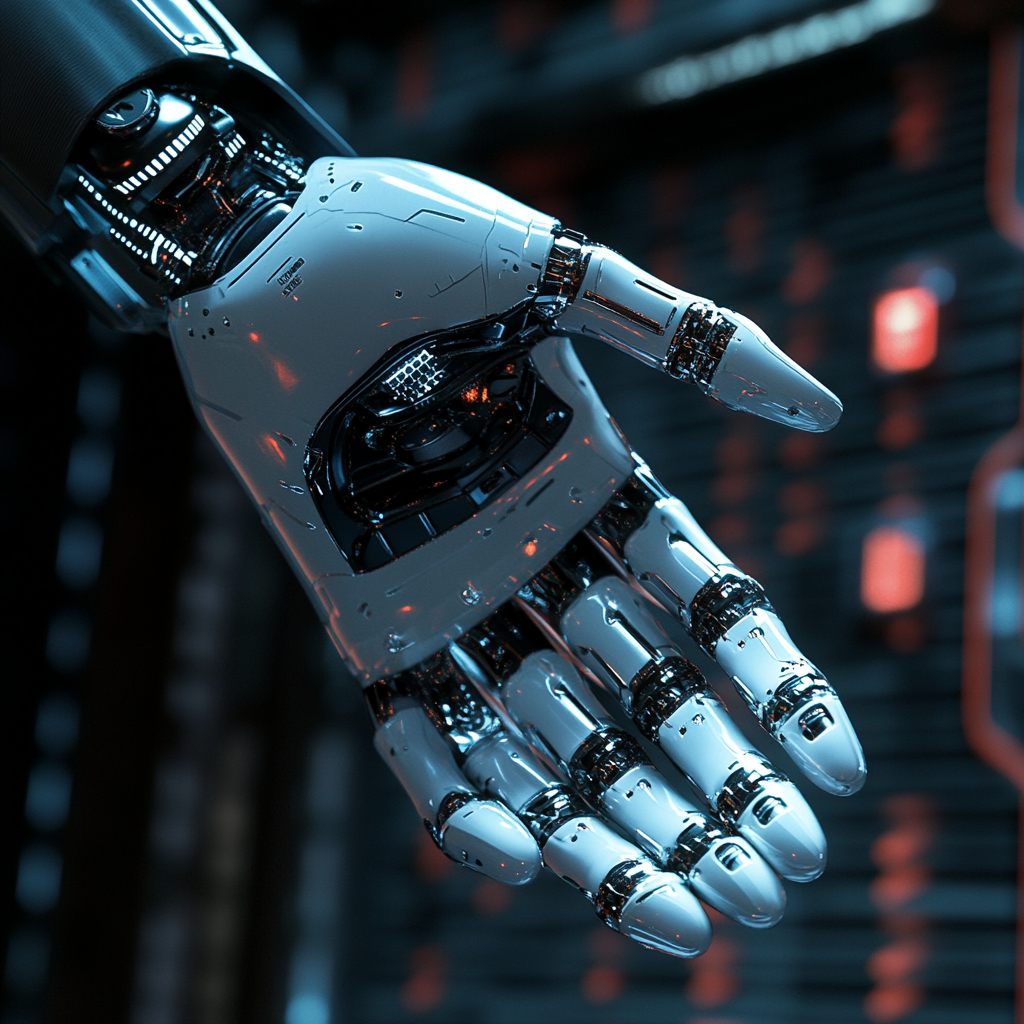
Feeling is believing: Bionic hand ‘knows’ what it’s touching, grasps like a human
In the ever-evolving landscape of prosthetics, there’s a new kid on the block, and it’s making quite the splash. The latest innovation in bionic hands is as thrilling as a rollercoaster ride – and just as groundbreaking. Imagine a hand that doesn’t just grip but also feels, a hand that doesn’t just function but interacts with the world like a human does. Welcome to the revolution: bionic hands that know what they’re touching and can grasp like a natural limb.
So, what’s the magic behind this astonishing advancement? Let’s take a deep dive into the world of engineering sorcery brought to life by the brilliant minds at Johns Hopkins University.
The Hybrid Wonder
Gone are the days when robotic hands were clunky or overly soft, unable to deliver the nuanced touch of humanity. This new hybrid design blows conventional ideas out of the water by merging the best aspects of both rigid and soft robotics. Imagine combining durable materials with the flexibility of a soft touch – that’s the essence of this bionic hand!
Key Components Making Waves
At the heart of this innovation lies an intricate multifinger system. Think of it much like a tiny circus of rubberized polymers interlinked with a robust internal skeleton crafted through 3D printing magic. This setup allows for precision handling that would make a cat burglar jealous. But that’s just the tip of the iceberg.
Also, those tactile sensors? They’re engineered to mimic the delicate layers of human skin. Three layers, no less. It’s like enveloping your fingers with feelings, making it possible for the bionic hand to distinguish between a feathery fabric and a serrated edge– a feat that could leave even the most skeptical observers in awe.
Now, let’s talk muscle signals. As anyone with experience in muscle readouts would tell you, controlling a prosthesis has often been a challenge. Yet here, machine learning swoops in like a superhero, translating forearm muscle signals into nerve-like messages that relay tactile feedback. Imagine your hand not just doing, but feeling. Remarkable, isn’t it?
Sensory Feedback That Packs a Punch
What’s the real kicker about this bionic hand? Every touch sends ripples through an intricate system that translates the sensation into the electrical language of human nerves. Users don't just pinch or grip; they feel the texture of an object in a way reminiscent of our sensory experience. This isn’t just engineering; it’s a bioinspired leap into the realm of realistic touch.
In lab tests, the hand performed flawlessly, showcasing a stellar 99.69% accuracy when handling 15 everyday objects. You could say it’s got a knack for dexterity! Need to pick up a water-filled plastic cup? No problem! The hand adjusts its grip automatically to avoid catastrophe. We’re talking about pushing the envelope of what a prosthetic hand can do in daily life!
Potential for Growth and Impact
If you think this is where the innovation stops, you’d be mistaken. The future is as bright as the touch-sensitive fingertips of this bionic marvel. Enhancements are in the pipeline, including stronger grip forces, more sensors for added sensitivity, and even tougher materials. And let’s not forget the implications of this technology beyond prosthetics. The potential for integrating similar systems into robotic hands could revolutionize industries requiring delicate handling. A bionic hand that operates with finesse? Yes, please!
Surgery Meets Engineering Elegance
This brilliance is not merely an engineering feat; it also ties seamlessly to cutting-edge surgical practices. In a recent study published in Science Translational Medicine, researchers revealed an intriguing surgical technique allowing individuals with arm amputations to control a bionic hand's fingers individually. Just picture: a reconfiguration of the residual limb to integrate with implanted sensors that connect to the prosthesis. Talk about a leap forward! Single-finger control with proactive sensory feedback? That’s a game changer.
What Lies Ahead
The pursuit of prosthetic hands that feel as much as they function is in full swing. Various exciting projects, like the KIT Prosthetic Hands, are exploring semi-autonomous capabilities through multi-modal sensing and clever computing. They’re like the Swiss Army knives of the bionic world, equipped with cameras, distance sensors, and an airy touch that makes daily tasks not just possible, but intuitive.
Curtain Call
The strides made in the bionic hand realm signify an exhilarating intersection of sophisticated engineering, surgical advancement, and bioinspired technology. It’s more than just a hand; it’s a ticket to a future where individuals with amputations can experience life in a manner once relegated to the realm of science fiction. This isn’t just about regaining functionality; it’s about stepping into a world where prosthetics feel like natural extensions of the human body. A beacon of hope illuminating the path forward for countless individuals.
So why let curiosity simmer? If you’re intrigued by the latest happenings in the world of bionic innovations and neural networks, don’t sit on the sidelines. Get in on the action! Want to stay up to date with the latest news on neural networks and automation? Subscribe to our Telegram channel: @channel_neirotoken. Come and be part of this incredible journey into the future!

